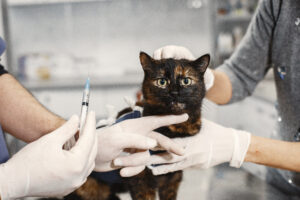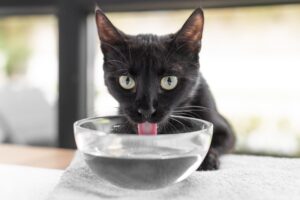Introduction
When bringing a feline companion into your home, one of the most important considerations is their overall health and longevity. While all cats require proper care and regular veterinary check-ups, some healthiest cat breeds naturally possess stronger immune systems and fewer genetic health concerns than others. These resilient felines not only save you frequent trips to the veterinarian but also provide years of companionship with minimal health-related worries.
In this comprehensive guide, we’ll explore the cat breeds with least health problems and delve into what makes these low maintenance healthy cat breeds such excellent choices for pet parents. Whether you’re a first-time owner or an experienced cat enthusiast, understanding which cat breeds with few health issues might be right for your household can help you make an informed decision that benefits both you and your future feline friend.
The healthiest cat breeds often share certain characteristics: robust genetic diversity, history of natural selection, and careful breeding practices. These factors contribute to cats with strong immune systems and remarkable resilience against common feline ailments. Let’s discover which most resilient cat breeds consistently rank among the healthiest companions for your home.
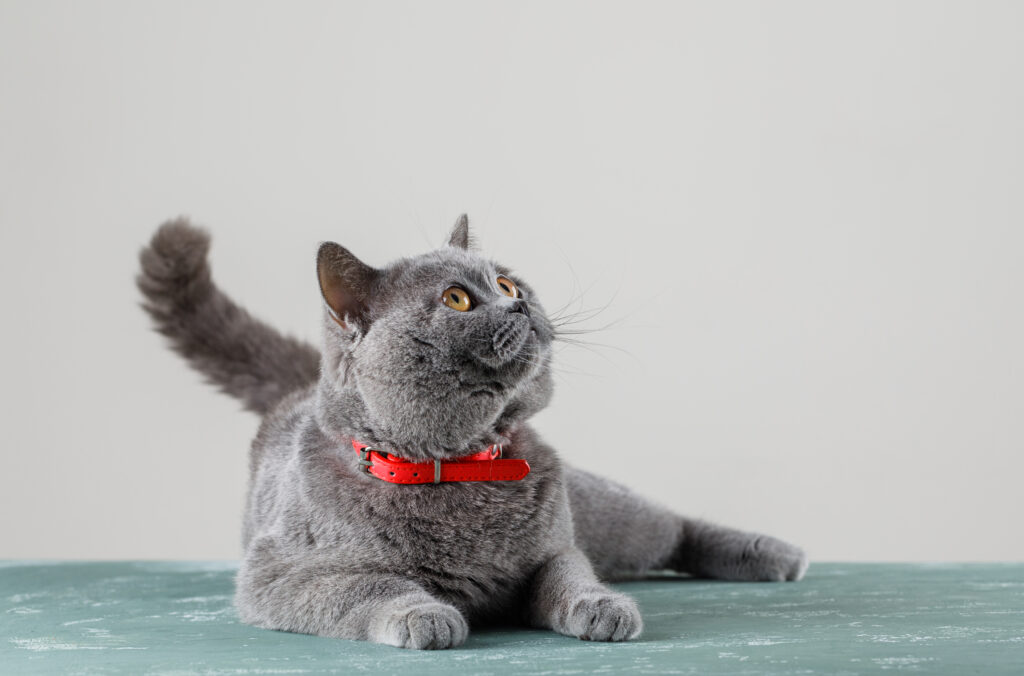
What Makes a Cat Breed “Healthy”?
Before diving into specific healthiest cat breeds, it’s important to understand what constitutes a genuinely healthy breed. Several factors contribute to a cat’s overall health profile:
Genetic Diversity
Healthiest cat breeds typically have good genetic diversity, which helps them avoid the hereditary conditions that can plague more heavily inbred populations. Breeds that developed naturally over time, rather than through intensive selective breeding, often display this beneficial genetic variability.
Body Structure
Cats with moderate body types—neither extremely flat-faced nor extremely elongated—tend to be among the cat breeds with least health problems. Extreme physical features can lead to breathing difficulties, joint problems, and other structural issues.
Known Health History
The healthiest purebred cats come from lines where breeders have carefully screened for hereditary conditions. When considering purebred cats, reputable breeders should provide health clearances for known breed-specific issues.
Natural Selection Advantages
Some low maintenance healthy cat breeds have benefited from generations of natural selection, resulting in hardy constitutions and strong immune systems. These cats often originated as working cats where only the healthiest individuals survived to reproduce.
Longevity Metrics
Long living cat breeds are generally considered healthier, as their genetic makeup supports extended lifespans. The cats that live the longest typically have fewer inherent health concerns that might shorten their lives.
The 4 Healthiest Cat Breeds That Rarely Get Sick
After reviewing veterinary literature, health studies, and breeder reports, we’ve identified four standout healthiest cat breeds that consistently demonstrate exceptional health, longevity, and resistance to common feline diseases. Let’s explore what makes these cat breeds with few health issues so remarkable.
1. Siberian Cat: Natural Immunity Champion
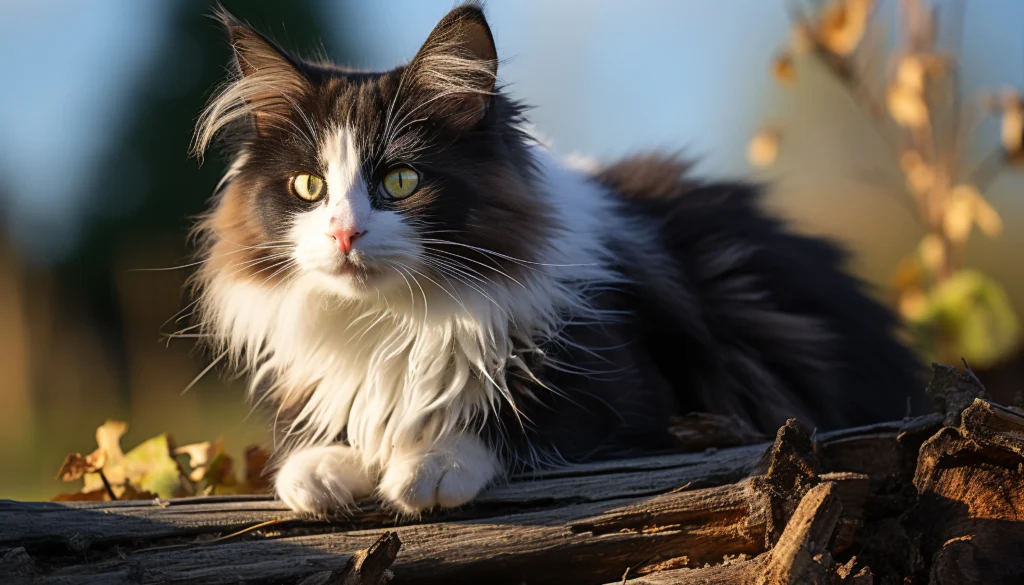
The Siberian cat ranks among the top healthiest cat breeds with an impressive natural constitution developed over centuries in the harsh Russian climate. These medium to large-sized cats boast exceptionally thick, water-resistant triple coats and robust physiques that reflect their evolutionary adaptation to challenging environments.
Health Advantages:
- Strong immune system developed through natural selection
- Relatively low incidence of hypertrophic cardiomyopathy (HCM) compared to other large breeds
- Few breed-specific genetic disorders
- Lower allergen production than many other breeds (though not truly hypoallergenic)
- Typical lifespan of 12-15 years, with many reaching 18+ years
Siberians are considered one of the most resilient cat breeds available today. Their natural development, free from excessive human breeding intervention until relatively recently, has resulted in cats with remarkable vigor and hardiness. These healthiest indoor cat breeds adapt well to home life while maintaining their robust health profile.
The Siberian’s genetic diversity contributes significantly to its status as one of the cat breeds with least health problems. Unlike some highly specialized breeds, Siberians haven’t undergone extensive selective breeding for extreme features, allowing them to retain a healthy genetic foundation.
As low risk health cat breeds, Siberians typically require only standard preventative veterinary care. Their natural resistance to common feline ailments makes them easy to care for cat breeds from a medical perspective, though their thick coats do require regular grooming.
2. American Shorthair: The Hardy All-American
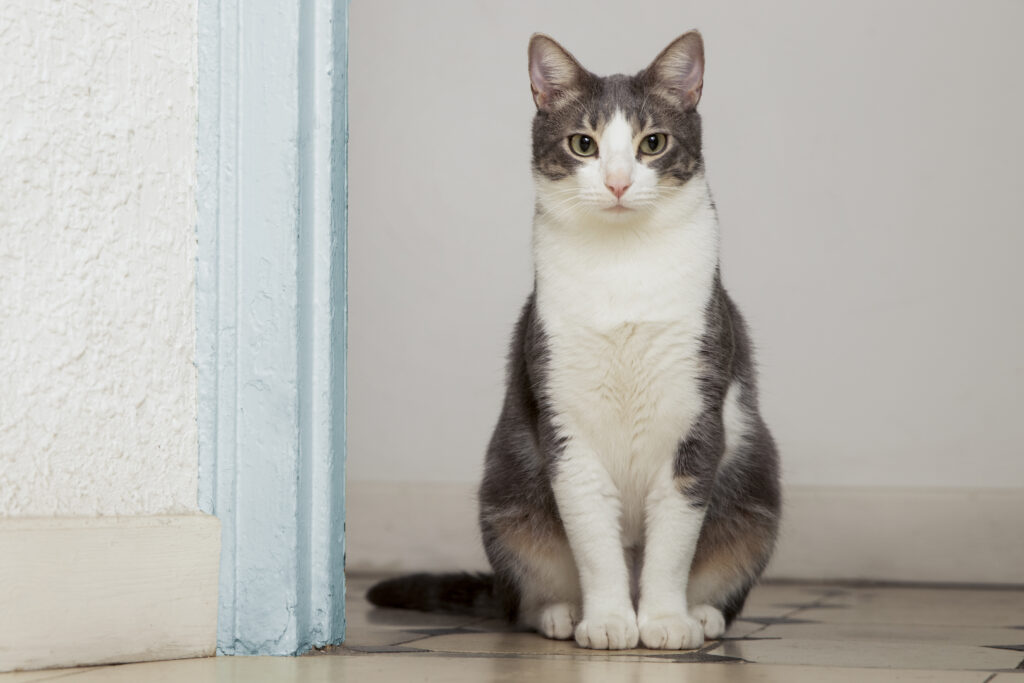
The American Shorthair has earned its reputation as one of the healthiest cat breeds through centuries of development as working cats on farms and ships. These medium-sized, muscular cats descend from European felines brought to North America as rodent controllers, where natural selection favored the hardiest individuals.
Health Advantages:
- Exceptionally strong immune system developed through working cat heritage
- Broad genetic base contributing to overall health
- Moderate body type without extreme features that could cause health problems
- Remarkably few breed-specific health concerns
- Impressive average lifespan of 15-20 years, making them long living cat breeds
American Shorthairs are widely recognized as best cat breeds for health due to their natural development and limited human interference in their breeding history. Their moderate features—neither extreme in face shape, body structure, or size—help them avoid many of the structural issues that plague more specialized breeds.
As low maintenance healthy cat breeds, American Shorthairs typically require minimal special care. Their short, dense coats need only occasional brushing, and their naturally athletic builds help them maintain good physical condition with regular play. These healthiest indoor cat breeds adapt well to home life while retaining their robust constitution.
The American Shorthair’s status as one of the cat breeds with minimal vet visits makes them economical companions as well. While all cats need regular checkups, American Shorthairs are less likely to develop costly health conditions than many other breeds, earning them a place among the best cats for first time owners.
3. Norwegian Forest Cat: Rugged Outdoor Heritage
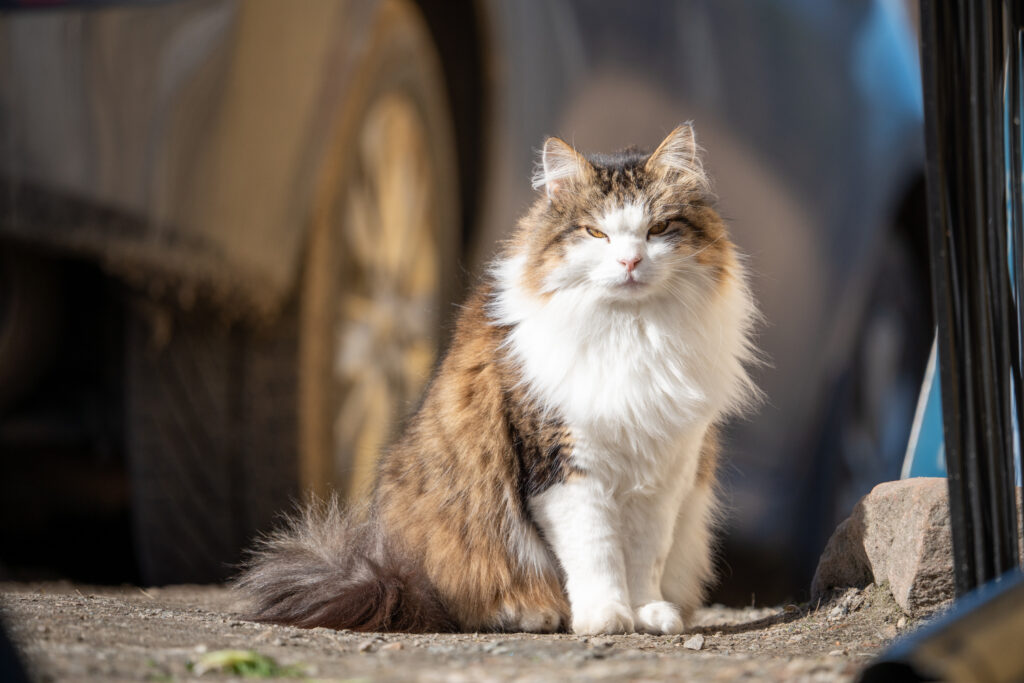
The Norwegian Forest Cat developed in the harsh Scandinavian climate, where only the most resilient cat breeds could survive. These large, powerful cats with their weather-resistant coats and sturdy builds represent one of nature’s success stories in feline evolution, placing them firmly among the healthiest cat breeds available today.
Health Advantages:
- Natural development with minimal human interference until modern times
- Robust skeletal structure and muscular build
- Extremely few breed-specific health issues
- Weather-resistant coat that indicates evolutionary fitness
- Typical lifespan of 14-16 years, with many reaching their early 20s
Norwegian Forest Cats (sometimes called “Wegies”) stand out as cat breeds with few health issues thanks to their natural development in challenging environments. Unlike heavily manipulated breeds, Norwegian Forest Cats evolved their distinctive features through natural selection, resulting in cats with remarkable physical and immune resilience.
Their status as healthiest purebred cats stems from their relatively recent recognition as a formal breed. Norwegian Forest Cats were well-established as a natural type before kennel clubs began standardizing them, allowing them to develop a strong genetic foundation before human selection narrowed their gene pool.
These low risk health cat breeds adapt well to domestic living while maintaining their natural hardiness. Their thick, water-repellent coats require regular grooming, but this maintenance is cosmetic rather than health-related. As cats with strong immune system characteristics, Norwegian Forest Cats typically enjoy robust good health throughout their long lives.
4. Mixed-Breed Domestic Shorthair: Hybrid Vigor Champion
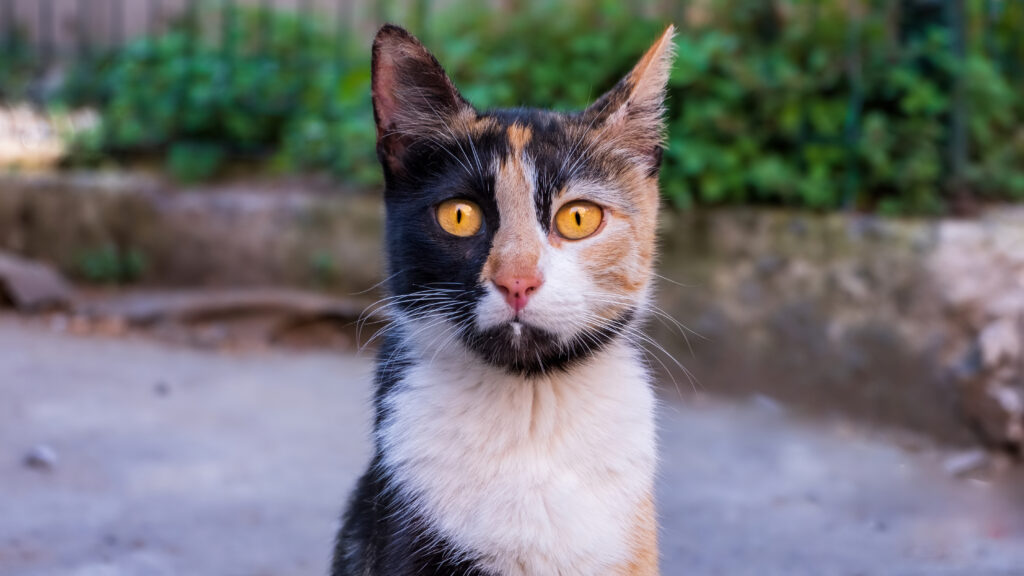
Perhaps surprisingly to some, regular mixed-breed domestic shorthairs rank among the healthiest cat breeds available. These cats, often referred to as “moggies” or simply “domestic shorthairs,” benefit from broad genetic diversity and hybrid vigor—the biological advantage that comes from outbreeding rather than inbreeding.
Health Advantages:
- Maximum genetic diversity reducing inherited disease risk
- No exaggerated physical features that might compromise health
- Natural selection for health and adaptability in varied environments
- Absence of breed-specific genetic disorders
- Average lifespan of 15-20 years, with many living into their early 20s
Domestic shorthairs represent the pinnacle of healthiest mixed cat breeds due to their unrestrained genetic diversity. Without human selection for specific physical characteristics, these cats have evolved naturally to be well-adapted, functional animals with balanced physical traits.
Their ranking among cat breeds with least health problems comes from their lack of concentrated recessive genes for inherited disorders. While purebred cats may have specific genetic health concerns that appear regularly within the breed, mixed-breed cats benefit from genetic combinations that dilute harmful recessive traits.
As low maintenance healthy cat breeds, domestic shorthairs typically require only standard preventative care. Their natural coat types rarely need special grooming, and their moderate body types help them avoid the structural issues seen in some specialized breeds. These factors make them easy to care for cat breeds for busy households.
The domestic shorthair’s reputation for being among the cats with minimal vet visits makes them practical choices for cost-conscious pet parents. Their natural hardiness and resistance to common feline ailments often translate to fewer emergency veterinary situations throughout their lives.
Factors That Contribute to a Healthy Cat Regardless of Breed
While certain healthiest cat breeds do have genetic advantages, proper care plays an equally important role in keeping any cat healthy. Even the most resilient cat breeds require appropriate nutrition, preventative healthcare, and suitable living conditions to thrive.
Nutrition and Diet
Proper nutrition forms the foundation for all cats with strong immune system characteristics. A balanced diet appropriate for the cat’s age, weight, and activity level supports overall health and longevity. High-quality cat food with appropriate protein levels and minimal fillers gives any cat the best chance at optimal health.
For long living cat breeds, careful attention to diet throughout life can help prevent obesity and related health conditions like diabetes and joint problems. Portion control and limited treats are important even for naturally healthy breeds.
Regular Veterinary Care
All cats, including the healthiest cat breeds, benefit from regular veterinary examinations. Annual wellness checks allow early detection of developing health issues before they become serious. For cats that live the longest, preventative healthcare plays a crucial role in their extended lifespans.
Even cat breeds with minimal vet visits need proper vaccination schedules, dental care, and parasite prevention. These routine interventions help maintain the natural health advantages these breeds possess.
Environmental Enrichment
Mental and physical stimulation contributes significantly to overall health for all cats. The healthiest indoor cat breeds still need appropriate exercise, climbing opportunities, and interactive play to maintain good physical condition and prevent behavior problems.
Environmental enrichment is particularly important for naturally active robust cat breeds like the Norwegian Forest Cat and Siberian. These intelligent, athletic cats need appropriate outlets for their energy to remain healthy and well-adjusted.
Preventative Care at Home
Regular at-home health checks can help identify potential issues early in even the healthiest cat breeds. Monitoring weight, checking teeth and gums, examining ears, and observing litter box habits allows owners to detect subtle changes that might indicate developing health problems.
For easy to care for cat breeds, these simple monitoring procedures become part of routine care that helps maintain their naturally good health. Early intervention when problems are detected can prevent minor issues from developing into serious conditions.
Healthiest Cat Breeds: FAQs
Are purebred or mixed-breed cats healthier overall?
Generally speaking, healthiest mixed cat breeds often have better overall health due to greater genetic diversity and hybrid vigor. However, responsibly bred purebreds from careful breeding programs can also be very healthy. Among purebreds, those with moderate physical features and broader genetic foundations—like the American Shorthair—tend to be healthiest.
What cat breeds have the fewest respiratory problems?
The cat breeds with least health problems regarding respiratory issues are those with normal-length muzzles rather than flat faces. American Shorthairs, Norwegian Forest Cats, and Siberians rarely experience the breathing difficulties that can affect brachycephalic (flat-faced) breeds. These normal-muzzled cats are among the healthiest cat breeds for respiratory function.
Which cat breeds are best for allergy sufferers?
While no cat is truly hypoallergenic, Siberians are often considered among the healthiest cat breeds for allergy sufferers due to lower levels of the Fel d 1 protein in their saliva. However, individual cats vary greatly, and potential owners with allergies should spend time with the specific cat they’re considering before adoption.
Do longhaired cats have more health problems than shorthaired cats?
Coat length itself doesn’t determine health status. Some longhaired breeds like the Norwegian Forest Cat and Siberian are among the healthiest cat breeds available. The key factors are genetic diversity and body structure rather than fur length. However, longhaired cats do require more grooming to prevent matting and hairballs.
What’s the difference between “hardy” cats and “healthy” cats?
“Hardy” typically refers to cats with strong immune system characteristics and physical resilience—their ability to withstand environmental challenges and resist illness. “Healthy” more broadly encompasses absence of genetic diseases, appropriate body structure, and overall wellbeing. The most resilient cat breeds score highly in both categories.
How much does care affect the health of naturally healthy breeds?
Even the healthiest cat breeds require proper care to maintain their natural advantages. Poor nutrition, lack of preventative healthcare, or unstimulating environments can compromise the health of genetically advantaged cats. Conversely, excellent care can help cats with less ideal genetic health live longer, healthier lives.
How to Choose a Healthy Cat: Adoption Tips
Whether you’re looking for healthiest purebred cats or considering mixed breeds, these tips can help you select a healthy individual:
From Breeders
When seeking healthiest cat breeds from breeders:
- Choose reputable breeders who health-test their breeding stock
- Ask about genetic testing for breed-specific conditions
- Request health guarantees and documentation
- Observe the facility for cleanliness and proper care
- Meet the parents if possible to assess their health and temperament
- Look for kittens raised in home environments with appropriate socialization
Responsible breeders of low risk health cat breeds will be transparent about their breeding practices and provide documentation of health testing. They should be knowledgeable about any breed-specific health concerns and work actively to minimize these risks in their breeding programs.
From Shelters
When adopting healthiest cats to adopt from shelters:
- Ask about the cat’s known medical history
- Observe energy levels, coat condition, and clear eyes
- Notice alertness and interest in surroundings
- Check for clear breathing with no discharge
- Look for symmetrical movement without limping
- Request information about temperament and behavior
Many best cats for first time owners come from shelters, where staff can often provide insights into the cat’s personality and any known health information. Domestic shorthairs from shelters can be excellent choices as healthiest mixed cat breeds with the advantage of hybrid vigor.
Conclusion
While no cat is completely immune to illness, the healthiest cat breeds discussed in this article—Siberians, American Shorthairs, Norwegian Forest Cats, and mixed-breed Domestic Shorthairs—consistently demonstrate superior health profiles and resistance to common feline ailments. Their natural development, moderate physical features, and genetic diversity contribute to their status as cat breeds with least health problems.
For prospective cat owners concerned about potential health issues and veterinary costs, these low maintenance healthy cat breeds offer peace of mind along with wonderful companionship. Their robust constitutions and natural resistance to illness make them excellent choices for households seeking easy to care for cat breeds with minimal health concerns.
Remember that even the most resilient cat breeds require proper nutrition, regular veterinary care, and appropriate environments to maintain their natural health advantages. With proper care, these naturally healthy cats can provide many years of companionship with minimal health-related worries.
Whether you choose one of the healthiest purebred cats or opt for a mixed-breed domestic shorthair, selecting from cat breeds with few health issues gives your new feline friend the best chance at a long, active life as your companion. The healthiest cat breeds bring not just good health but delightful personalities and the joy of feline companionship with fewer health-related worries.
Additional Resources for Cat Health
For more information about cat health and care, check out these trusted resources:
- Cornell University College of Veterinary Medicine Feline Health Center – Evidence-based information on cat health and care
- The Cat Fanciers’ Association – Breed information and health resources
- American Association of Feline Practitioners – Veterinary guidelines for feline care
- International Cat Care – Comprehensive resources on cat health and welfare
For more great articles about pet health and care, visit our other helpful resources at PetsPump:
- Essential Cat Vaccination Guide
- Best Cat Nutrition for Every Life Stage
- How to Choose the Right Cat for Your Family
- Preventative Health Care for Cats
Remember that individual cats may vary in health regardless of breed, and proper care plays a crucial role in maintaining the health advantages of naturally healthy breeds.



